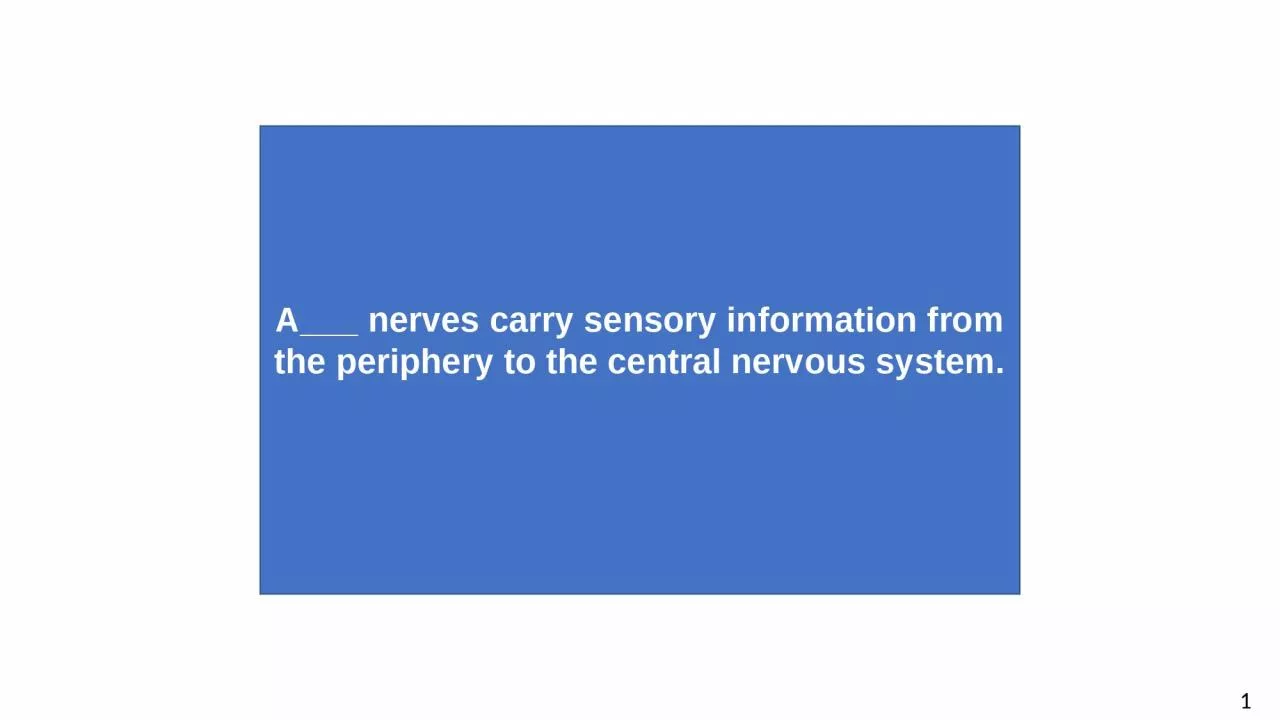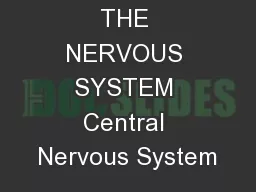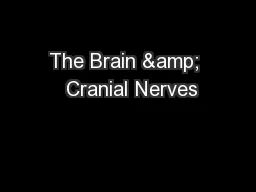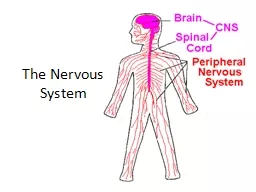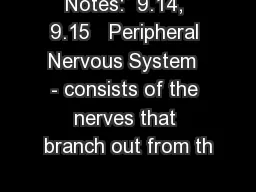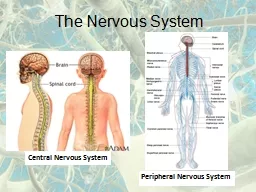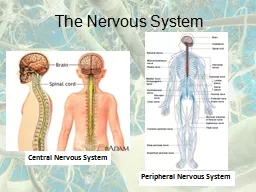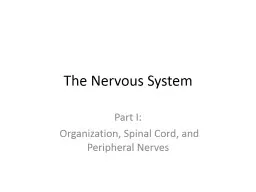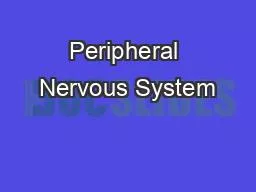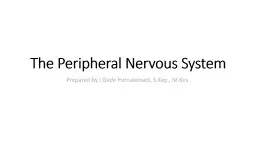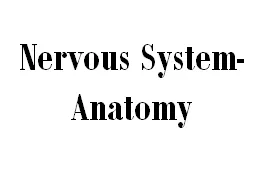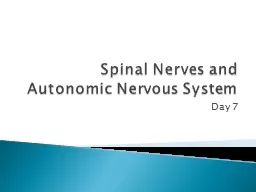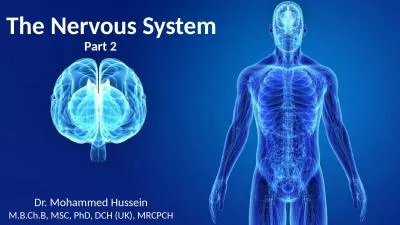PPT-A___ nerves carry sensory information from the periphery to the central nervous system.
Author : patricia | Published Date : 2024-03-15
1 Afferent 1 a brain area critical to learning to recognize threatening situations 2 amygdala 2 toward the nose 3 anterior 3 One of three meninges that surround
Presentation Embed Code
Download Presentation
Download Presentation The PPT/PDF document "A___ nerves carry sensory information fr..." is the property of its rightful owner. Permission is granted to download and print the materials on this website for personal, non-commercial use only, and to display it on your personal computer provided you do not modify the materials and that you retain all copyright notices contained in the materials. By downloading content from our website, you accept the terms of this agreement.
A___ nerves carry sensory information from the periphery to the central nervous system.: Transcript
Download Rules Of Document
"A___ nerves carry sensory information from the periphery to the central nervous system."The content belongs to its owner. You may download and print it for personal use, without modification, and keep all copyright notices. By downloading, you agree to these terms.
Related Documents

